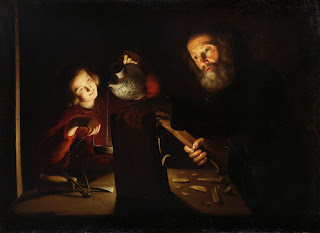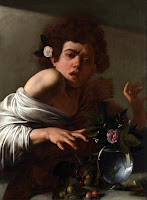[UPDATED OCT 11 2017]
Part 1: The Queensferry Crossing
Here we are (were) on the No. 35, making our way to our "Hub" near the Gyle shopping centre, where the official buses would be waiting to take us to the start of the new bridge. [This was taken through the window of the bus, and is a merging of two photos!]
 Click on the images please, to see them bigger.
Click on the images please, to see them bigger.The start was very crowded, but the atmosphere was cheerful. An open door into a loo was rather unsightly, so Alice closed it digitally. Hee, hee. [Photo by The Telegraph.]

 Near the beginning of the walk. Even this little post had been designed with the fan motif of the huge towers and cables. The whole structure was fabulously beautiful. And it was lovely weather for everyone too.
Near the beginning of the walk. Even this little post had been designed with the fan motif of the huge towers and cables. The whole structure was fabulously beautiful. And it was lovely weather for everyone too.Further along, some panels had been removed from the wind-shields, so we could have a good view of the Forth estuary.
For information on the building of the bridge, see Queensferry Crossing ARC.
This is Alice's prize photo, with both the Rail Bridge and the Road Bridge framed by the crossing cables, plus a few decorative clouds.
 Here's a screenshot from a fascinating animated video by the Centre for Digital Documentation and Visualisation (yes, that is what the organisation is called!) which gives you a jolly good understanding of how they set about building this amazing construction. Do check this one out - it's fun as well as informative.
Here's a screenshot from a fascinating animated video by the Centre for Digital Documentation and Visualisation (yes, that is what the organisation is called!) which gives you a jolly good understanding of how they set about building this amazing construction. Do check this one out - it's fun as well as informative.
 Our bus was waiting for us at the end. We realise now it was to become one of the new 300 airport buses, which have replaced the rumbling old 35s.
Our bus was waiting for us at the end. We realise now it was to become one of the new 300 airport buses, which have replaced the rumbling old 35s.Driving back over the Road Bridge, we had a good view of the old rail bridge as we neared South Queensferry.
To finish this part of our catch-up, here's a lovely distant view of the gorgeous edifice, seen on the way back home on the (now defunct) No. 35 - taken through the window of the bus again.
Part 2: "Doing Art" again

 We went along to the Scottish National Portrait Gallery recently, to catch their exhibition of historical photos by the pioneers, David Octavius Hill and Robert Adamson .
We went along to the Scottish National Portrait Gallery recently, to catch their exhibition of historical photos by the pioneers, David Octavius Hill and Robert Adamson .They set up their studio in Edinburgh in 1843, not long after photography was invented. They used a process which involved treating paper with special chemicals to make what we would call a "negative" from which prints could be created on another type of treated paper. The first required large cameras, patient subjects and exposure to natural sunlight. Sun was needed for the prints also.
We particularly liked this image, both the negative and the print, of Lady Mary Hamilton (Campbell) Ruthven.
It's interesting that the photographers chose to take her back view, to show off her beautiful cape and over-skirt. See this interesting article about the Calotype process, and another about the different types of photographic process.
The top image here is a photo of Miss Elizabeth Logan, who was the daughter of the Sheriff of Forfarshire. I imagine the doll, and the pretence (was it?) of sleep was a way to keep her still for the exposure required. Notice the leaves in the top left corner indicating the outdoors setting.
The lower photo is called The Gowan, meaning a wild white or yellow flower, such as a daisy. See the Burns reference in the Scotsman.
The two girls were the sisters Margaret and Mary McCandlish. I bet it was hard for the one girl to resist really tickling the other, as movement would have spoiled the long (many seconds) exposure time.
 These charming studies of young girls reminded Alice (of course) of those by Charles Dodgeson (Lewis Carroll), who took many photos of children, not just of Alice Liddell and her sisters.
These charming studies of young girls reminded Alice (of course) of those by Charles Dodgeson (Lewis Carroll), who took many photos of children, not just of Alice Liddell and her sisters.See this article from the Smithsonian musem, which says, Of the approximately 3,000 photographs Dodgson made in his life, just over half are of children. The one on the right here is one of Alice posing as The Beggar Maid: one of our Alice's favourites.
[She says you must click please, and see it bigger.]
 The front entrance to the Scottish National Gallery is right on the main part of Princes Street. They often put up huge banner ads here for their exhibitions. This one was due to finish the day we eventually decided to go.
The front entrance to the Scottish National Gallery is right on the main part of Princes Street. They often put up huge banner ads here for their exhibitions. This one was due to finish the day we eventually decided to go.Ba, who doesn't "Do Art", only consented to be included in this photo, because there was some Nature about with the plants in the planter on the street. They used this painting of A Man Singing by Candlelight by Adam De Coster [ not by Caravaggio himself ] as the "Beyond" referred to other artists who followed him in style. The lighting effect is pretty dramatic, isn't it?
 As soon as you say "Caravaggio" to Alice, she thinks of the marvellous 1986 film of that name, by the talented Derek Jarman. It had a young Sean Bean and Tilda Swinton in it, plus lots of inventive anachronisms, like a stylus with tablet; a motor bike, and a typewriter.
As soon as you say "Caravaggio" to Alice, she thinks of the marvellous 1986 film of that name, by the talented Derek Jarman. It had a young Sean Bean and Tilda Swinton in it, plus lots of inventive anachronisms, like a stylus with tablet; a motor bike, and a typewriter.Get back to the point! There were oodles of dramatic paintings in the exhibition.
We rather liked this one, of Christ in the Carpenter's Shop by Trophime Bigot, with the light source hidden between the two figures.
This one is a real Caravaggio painting. It's of a Boy Bitten by a Lizard. [ Don't forget you can click on any of these to see them larger. ]
According to Wikipedia, there are two versions of it, both genuine.
One critic has proposed it's a disguised self-portrait, as the subject's hands – one stretched out, the other raised up – are in a similar position to those of a painter holding a palette while painting. Well, there you go now!
We just loved this one. Click to look closer and you'll see why!
It was painted by one Orazio Borgianni (1574 - 1616).
Titled St Christopher Carrying the Infant Christ, it features an extremely tiny Christ Child on the saint's shoulder. Maybe his size is supposed to be symbolic? You could read about the legend.
For more on the picture and the story behind it, see the gallery's website here.
Part 3: our beloved Begonia again - really the very last time . . .

 Wasn't it doing well! The pot in which its roots must be all curled about, isn't actually very big at all when compared with the stalks and leaves and flowers. A week later, the flowers on what we had called the "baby" shoot have grown and blossomed even more still. Click, click!
Wasn't it doing well! The pot in which its roots must be all curled about, isn't actually very big at all when compared with the stalks and leaves and flowers. A week later, the flowers on what we had called the "baby" shoot have grown and blossomed even more still. Click, click!Ba can't see them so well here (on the right) but agreed to pose so that you can see the lovely flowers really clearly. Aaah.
Part 4: an exciting cinematic event - can you guess?
 Yes, we went to see the terrific Blade Runner 2049, directed by Denis Villeneuve, who made the fiendish Sicario and the amazing Arrival. It's the long awaited sequel (35 years for some of you lot) to the 1982 Blade Runner, or the superior 2007 Final Cut version.
Yes, we went to see the terrific Blade Runner 2049, directed by Denis Villeneuve, who made the fiendish Sicario and the amazing Arrival. It's the long awaited sequel (35 years for some of you lot) to the 1982 Blade Runner, or the superior 2007 Final Cut version.Avoiding any spoilers (because there is a big secret) we can report it is definitely a most worthy successor to Ridley Scott's original. It's very philosophical, too, asking the Big Questions about what it means to be human. Right up Alice's street, in fact. What street?!
Visually it's stunningly beautiful, even when depicting the horrors of the future. It has been meticulously shot and edited, so renowned cinematogrpher Roger Deakins must surely get an Oscar at long last.
How did I get to be in this poster? Go here and you can make one for yourself, using any name or photo. But you need someone to add the bit about the "cameo". Thank you Alice!
Well, we have finally caught up at long last. I hope you're glad you stayed with us.










